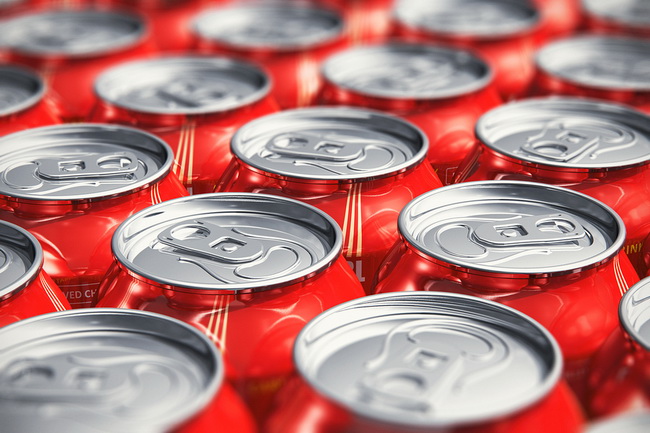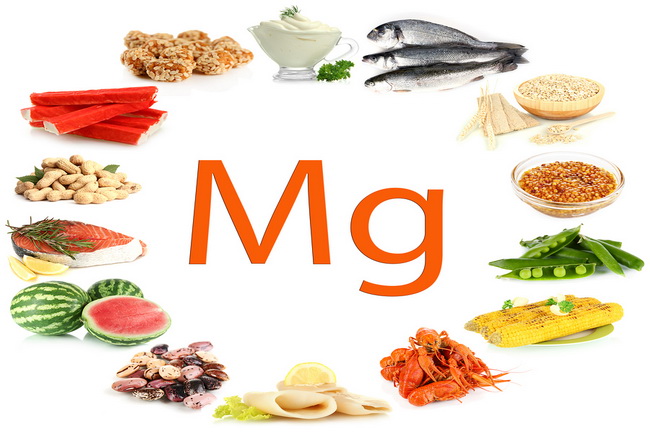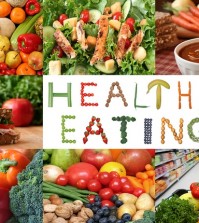- Make It Yourself Lavender Heart-Shaped Bath Bombs!
- 20 Things You Never Knew About “Down There”
- 12 Best Foods For Those Suffering From Arthritis Pain
- 12 Personal Hygiene Mistakes Almost Everyone Makes (Mom Never Told You About #4!)
- 15 Medicinal Plants And Herbs From The Cherokee People
- 12 Mind-Blowing Benefits Of Drinking Coconut Water During Pregnancy
- 12 Outstanding Winter Foods That Won’t Fatten You Up Like A Christmas Turkey
Best Foods To Eat And Which To Avoid To Help With ADHD

Photo credit: bigstock.com
If your child suffers from ADHD, you know how difficult it can be to help them. Doctors simply want to push drugs on your kids and tell you that you are “ruining” your child’s life if you don’t give in to them. Of course, some adults also suffer from ADHD, but in this article we are going to focus on school age children.
Although scientists do not yet have a cure, or even a magic pill, (and don’t be fooled, drugs like Ritalin are NOT the answer) there are other options besides pharmaceuticals. Diet alone is not the driving force behind ADHD, but it certainly does play a large part. Several studies have found that certain foods or food additives affect certain symptoms of ADHD.
We have compiled a list of some of the worst ingredients and foods that anyone suffering with ADHD needs to avoid as well as a list of foods that seem to help improve the symptoms.
Keep reading and find out which foods you should avoid and which foods you should offer more of to your child and see if these make any difference in their behavior.
Foods and Additives to Avoid:
1. Artificial Colors and Other Additives
As early as the 1970’s, doctors and scientists have believed that the synthetic dyes, preservatives, and flavors cause behavior problems. Researchers have found in numerous studies that there is a link between artificial food colors and hyperactivity. Although FDA law states that certain colors, such as FD&C Yellow #5 (sometimes called tartrazine) and FD&C Red #40 (sometimes called allura) need to be on all food labels, there are plenty of other colors that do not. If you eat something and it colors your tongue a bright color, it almost certainly contains artificial colors. This includes things like canned fruit, barbeque sauces, fruit flavored drinks, sports drinks, some kid’s vitamins (such as chewy, gummy type vitamins), and fruit flavored cereals, dried fruit snacks, gelatin powder, and even toothpaste.
You should also be aware of a preservative called sodium benzoate. Studies have found that this synthetic preservative increases hyperactivity. This preservative is found in numerous foods such as condiments (ketchup or soy sauce for example) salad dressings, and carbonated beverages. Other preservatives that are suspect are TBHQ, sodium nitrate, BHA and BHT.
Continue to Page 2

Photo credit: bigstock.com
2. Sodas and Energy Drinks
Whether your child has ADHD or not, they should not be consuming sodas since they are one of the worst possible things they can consume. Sodas are loaded with GMO high fructose corn syrup. In fact, some sodas have so much sugar they actually make some candy bars look like they are good for you! High fructose corn syrup and caffeine are something that your child, especially if they have ADHD, should not be drinking! Energy drinks are very popular with teens but they are also loaded with ingredients that make ADHD symptoms worse.
3. Salicylates
Some people have a natural sensitivity to this product, which is found in many natural foods such as cranberries, red grapes, tomatoes, and red apples. In the early 1970’s, one doctor tried removing artificial dyes and salicylates from patients that were hyperactive. He found that a minimum of 30 percent of his subjects saw improvement in their behavior. Try removing red foods from your child’s diet for 30 days and see if there is any noticeable improvement.
4. Sugar and Simple Carbs
By simple carbohydrates, we are talking about things that are mostly made with white flour such as most breads, waffles, pancakes, cookies, cake, pie, and pasta. Your body digests these carbs and turns them in to sugar so quickly that the effect really isn’t any different than eating sugar right out of the bag. High sugar consumption leads to numerous health problems and should be extremely limited in your house. Most American children eat far too much white sugar and simple carbs. Avoid these foods as much as possible.
5. Common Food Allergens
Allergens can be in almost any food and they can affect the brain in ways that cause kids to be inattentive or hyperactive. Try removing the following common foods allergens from your child’s diet for 30 days, then reintroduce them one at a time to see if you notice any difference in behavior:
- Wheat, Rye, Barle
- Fish
- Shellfish
- Soy
- Cow’s Milk and Milk Products
- Eggs
- Tree Nuts
- Peanuts
6. Frozen Fruits and/or Vegetables
Although many people have no problem with frozen produce, some produce is sprayed with artificial colors before they are frozen. Also, many frozen types of produce are not organic. Foods that contain pesticides have been shown in studies to cause neurological based behavioral problems that mimic ADHD.
Continue to Page 3

Photo credit: bigstock.com
Foods That Help ADHD Symptoms:
1. Protein
When you cut out simple carbs and sugars from your child’s diet, replace them with high protein choices. Foods such as eggs, beans, pork, lean beef, and soy can have a very beneficial effects on those with ADHD. Foods that are high in protein help the body to make neurotransmitters, which are chemicals that the brain uses so that cells can communicate with each other. Protein filled meals and snacks will also help to prevent spikes in blood sugar, which increases hyperactivity.
2. Goat Milk and Goat Cheese
If you have never tried goat’s milk, you will be pleasantly surprised. Most people believe that goat’s milk will smell, well, like a goat! But it doesn’t. If you want to cut out dairy in hopes of seeing an improvement in your child’s behavior but worry about their calcium intake, give them goat’s milk and goat cheese instead. The strange thing about goat’s milk is that no matter how cow’s milk might affect someone, no one seems to be allergic to goat’s milk. Try it. Then give it to your child. Tell them that the family is changing to dinosaur milk. Kids always love eating or drinking something they think is “cool”.
3. Magnesium and Zinc
These two minerals play a very important part in managing ADHD symptoms. They are essential to the body and most Americans are deficient in these minerals due to our modern day farming methods. Zinc regulates dopamine, a vital neurotransmitter. Magnesium is also used by the body to make neurotransmitters and helps to calm the brain. One Brazil nut each day will give your child all the zinc they need for the day. Magnesium is difficult for the body to absorb via supplements so add some Epsom salts to your child’s bath three times each week.
4. Omega-3 Fatty Acids
These have been shown in several recent studies to help control ADHD symptoms. A body that does not have sufficient levels of omega-3 fatty acids is like a car not running on all of its cylinders. It might run, but not very well. For proper brain function, the body must get omega-3 fatty acids in the diet. The body does not make this fatty acid, which is why it is called an essential fatty acid. Children under 10 need about 1,000 mgs each day and older children need about 2,000 mgs each day. Offer a safe fish to eat to your child, cook it twice or three times each week, or talk to your doctor about a supplement.
Continue to Page 4

Photo credit: bigstock.com
5. Blueberries
Studies involving lab animals have shown that blueberries protect the brain from damage and reduce the effects of age-related diseases such as dementia. Studies have also found that diets rich in blueberries improve the learning ability of elderly rats, making them mentally equal to younger rats. Offer your child more blueberries as a snack, in their oatmeal, or in cereal and yogurt.
6. Avocados and Whole Grains
The brain requires sufficient blood flow. Eating a diet high in whole grains and fruit, such as avocados, can lower cholesterol levels, which improve blood, flow to the brain. You might not think that a young child can have high cholesterol, but removing any impediment to blood flow is a good one. Whole grains, such as popcorn, contribute to fiber and are high in vitamin E, which is also good for the brain. Avocados have high levels of monounsaturated fats, which also help improve blood flow to the brain.
As we said earlier, your child’s diet might not stop ADHD entirely, but it might make enough of a change that you can avoid those chemically filled pharmaceutical drugs. Avoid junk foods, fast food, and sugar filled foods as much as possible so that your child can enjoy the best health possible.
READ ALSO: 12 Herbs That Help Stop ADHD
Don’t forget that every child is different and will react to certain foods in a different manner. For example, some children are very allergic to peanuts, while many children love peanuts. Pay attention to your child and the changes you make in their diet as certain types of foods can cause allergic reactions or trigger ADHD. If you have any doubts or questions about making some of these changes, speak with your doctor.
References:
































